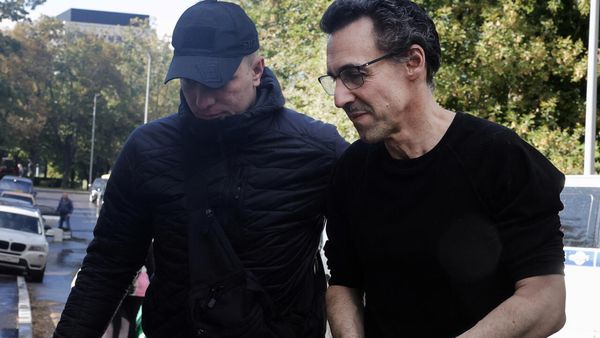
Amazon.com Inc. (NASDAQ:AMZN) grew from two people packing books in a Bellevue garage into a $2.4 trillion powerhouse. Founder Jeff Bezos labeled parcels and drove them to the post office while his then-wife, MacKenzie Scott, sealed boxes.
With no headquarters and scarce funds—just a buzzing server and a dream of selling "everything"—the door-desk startup now runs planes, data centers, and streaming studios. How did that bare concrete floor become a global superhighway?
Don't Miss:
- $100k+ in investable assets? Match with a fiduciary advisor for free to learn how you can maximize your retirement and save on taxes – no cost, no obligation.
- ‘Scrolling To UBI' — Deloitte's #1 fastest-growing software company allows users to earn money on their phones. You can invest today for just $0.30/share.
Garage Sparks An Online Bookstore
Bezos registered Amazon.com in 1994 and quietly tested the site before its official debut. Early buzz spread through email lists and internet forums, attracting tech-savvy readers. The garage-built store tapped a hungry online audience—one that would soon help redefine global commerce by combining low prices with wide selection .
Door Desk Defines Frugal Culture
Money stayed tight. To save cash, Bezos built desks from inexpensive hollow‑core doors, according to Amazon's door‑desk history, which calls the hack a lasting symbol of thrift. Employees still earn miniature door‑desk awards for frugal wins. In 2024, Business Insider reported the billionaire still works at one scratch‑built desk, showing frugality never left the corner office.
Trending: Accredited Investors: Grab Pre-IPO Shares of the AI Company Powering Hasbro, Sephora & MGM—Just $0.63 Before NASDAQ Launch
Get Big Fast Strategy Pays Off
Bezos prioritized scale over quick profits. His 1997 shareholder letter urged nonstop "Day 1" urgency. A year earlier, he handed staff T-shirts stamped "Get Big Fast," making the slogan Amazon's rallying cry before larger retailers moved online.
He fueled growth with his personal savings, family support, and angel funding. In a 2001 Academy of Achievement interview, he cited a "regret minimization framework" — a vow to avoid asking "What if?" at age 80.
The strategy paid off. Amazon reached its 10 millionth customer in 1999, survived the dot-com crash, and Bezos personally delivered the milestone order — antique golf clubs — posing for cameras with the buyer.
Prime And AWS Redraw The Map
In 2005, Amazon launched Prime, offering fast shipping for a flat fee. Two years later, the company unleashed Amazon Web Services, turning spare computing power into a cloud platform now used by millions.
See Also: Warren Buffett once said, "If you don't find a way to make money while you sleep, you will work until you die." Here’s how you can earn passive income with just $10.
According to AWS leaders, the service still runs on Day 1 principles: long term focus, fixating on customers and what they need, and boldly innovating to satisfy those needs.
Prime's promise of two‑day shipping soon felt slow, sparking same‑day deliveries in major cities. Together, Prime and AWS reshaped the company from an online retailer into a vital infrastructure provider.
Electric Deliveries Keep Day 1 Alive
Amazon's customer focus now extends to bike lanes. In 2024 alone, e‑cargo bikes delivered more than 60 million packages across New York City, easing traffic and emissions. The company has also partnered with Rivian Automotive (NASDAQ: RIVN) to develop a fleet of electric delivery vans, aiming to have at least 100,000 on the road by 2030.
These efforts are part of Amazon’s broader commitment to achieve net-zero carbon emissions by 2040, a goal it co-founded through The Climate Pledge, which now has over 525 signatories globally.
Read Next: Are you rich? Here’s what Americans think you need to be considered wealthy.
Image: Shutterstock







